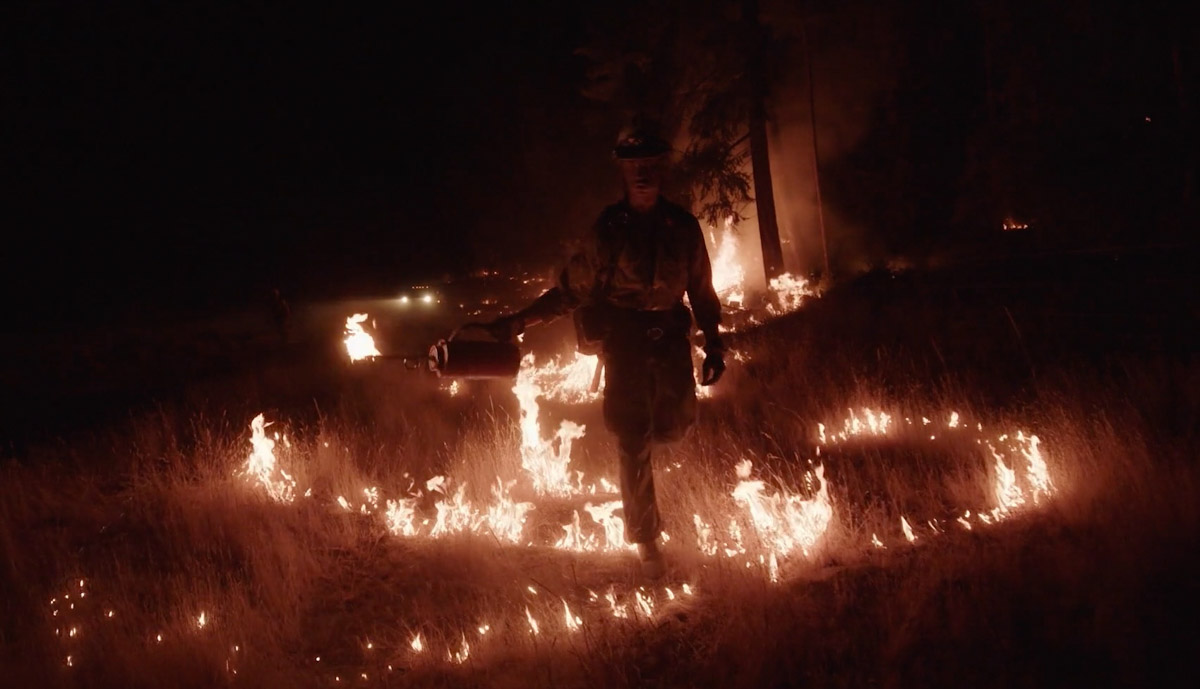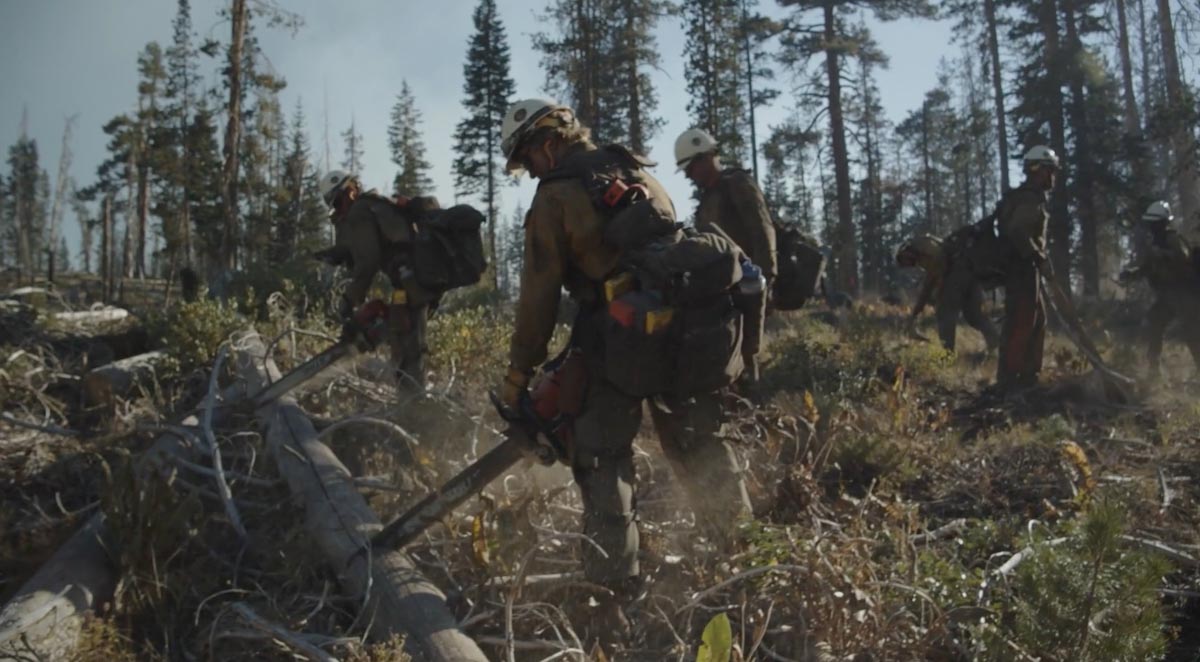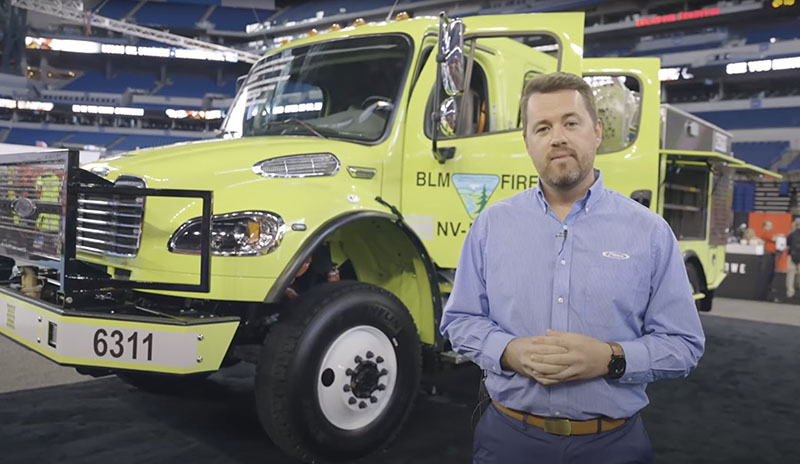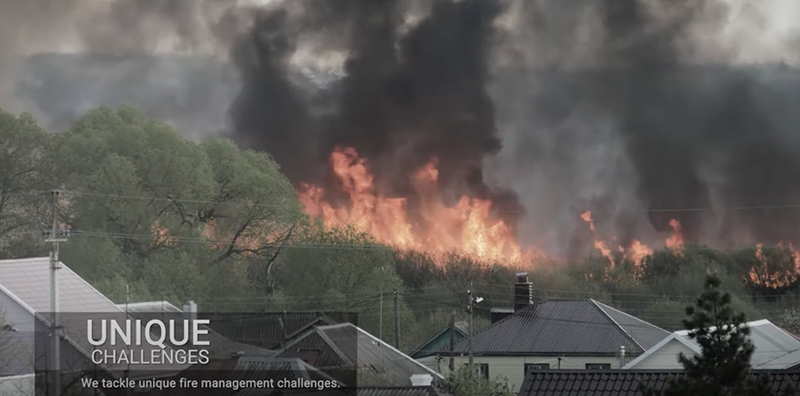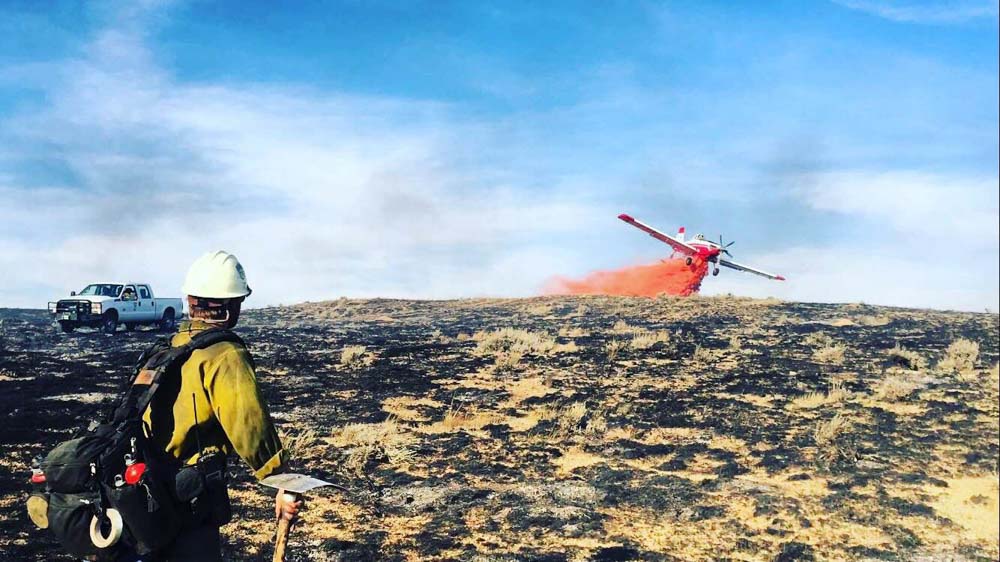A new wildfire near the small Malheur County town of Brogan grew quickly to over 20,000 acres by Thursday evening, prompting closure of a 23-mile stretch of U.S. Highway 26 in eastern Oregon and evacuation alerts, along with call-up of two state structural-protection task forces, authorities said.
It’s burning on private and public lands 9 miles east of Ironside, and by this afternoon it was pushing 75,000 acres.

KTVB-TV reported that crews are battling two fires near U.S. Highway 26 in eastern Oregon. The Cow Valley Fire and the Bonita Road Fire both started early Thursday morning.
Others include the nearly 14,000-acre Larch Creek Fire south of The Dalles in Wasco County, which is still without any containment, and the nearly 4,000-acre Salt Creek Fire in Jackson County, about 16 percent contained.
The Larch Creek Fire grew from just 100 acres Tuesday afternoon, overnight and the next day, and by Wednesday night it was pushing 11,000 acres, according to the Oregon Department of Forestry. Zach Urness with the Statesman-Journal reported that the fire was at 13,816 acres Friday morning after more than 3,000 acres of growth overnight. The fire remains at zero percent containment, and Highway 216 east remains closed between milepost 1 and 4.
Thursday afternoon brought windy conditions to the area but fire behavior moderated overnight with lower temperatures and winds. Overnight crews worked closer to the active areas, building line and securing perimeters around Shadybrook Road and Highway 216.
“Today, air and ground crews will be active on all sides of the fire, building fire line, reinforcing existing line, and monitoring for hot spots. Structure protection will be focused on the community of Tygh Valley, Pine Hollow and Shadybrook subdivisions, and along Highway 216,
The Wasco County Sheriff’s Office has issued a Level 3 “Go Now!” evacuation order from Friend Road, East to Elliott Road and Highway 197, South to Badger Creek Road, West to McCorkle Grade Road.
Residents of at least 41 homes were advised to evacuate. Several other areas are under Level 2 and Level 1 evacuation orders.
Check the latest evacuation maps from the Wasco County Sheriff’s Office
The area was under a Red Flag Warning for critical fire weather on Tuesday afternoon.
There are 22 large fires burning Oregon totaling over 145,277 acres, according to the Northwest Interagency Coordination Center.
Early afternoon Friday Vale District BLM said the Cow Valley Fire had burned over 73,720 acres. ODOT shared photos on TripCheck of the Cow Valley Fire yesterday.

KTVB in Boise reported 30-50 homes in Brogan are threatened, and power was shut down for customers at risk from powerlines close to the fire.
It was one of three large new area fires, along with the 4,500-acre Huntington Mutual Aid Fire in Baker County, which forced evacuations and alerts in the Huntington area and Farewell Bend State Park, and the 1,867-acre Bonita Road Fire, also in Malheur County, reported early Thursday morning.
The fire is moving toward Malheur Reservoir and is threatening 30 to 50 homes in the Brogan community. Malheur County Sheriff’s Office is advising residents to prepare for evacuation orders. At one point, 16 aircraft were assigned to the fire, dropping water and retardant, along with seven engines and four dozers plus crews from Vale and Burnt River RFPAs and Sand Hollow Fire District.

